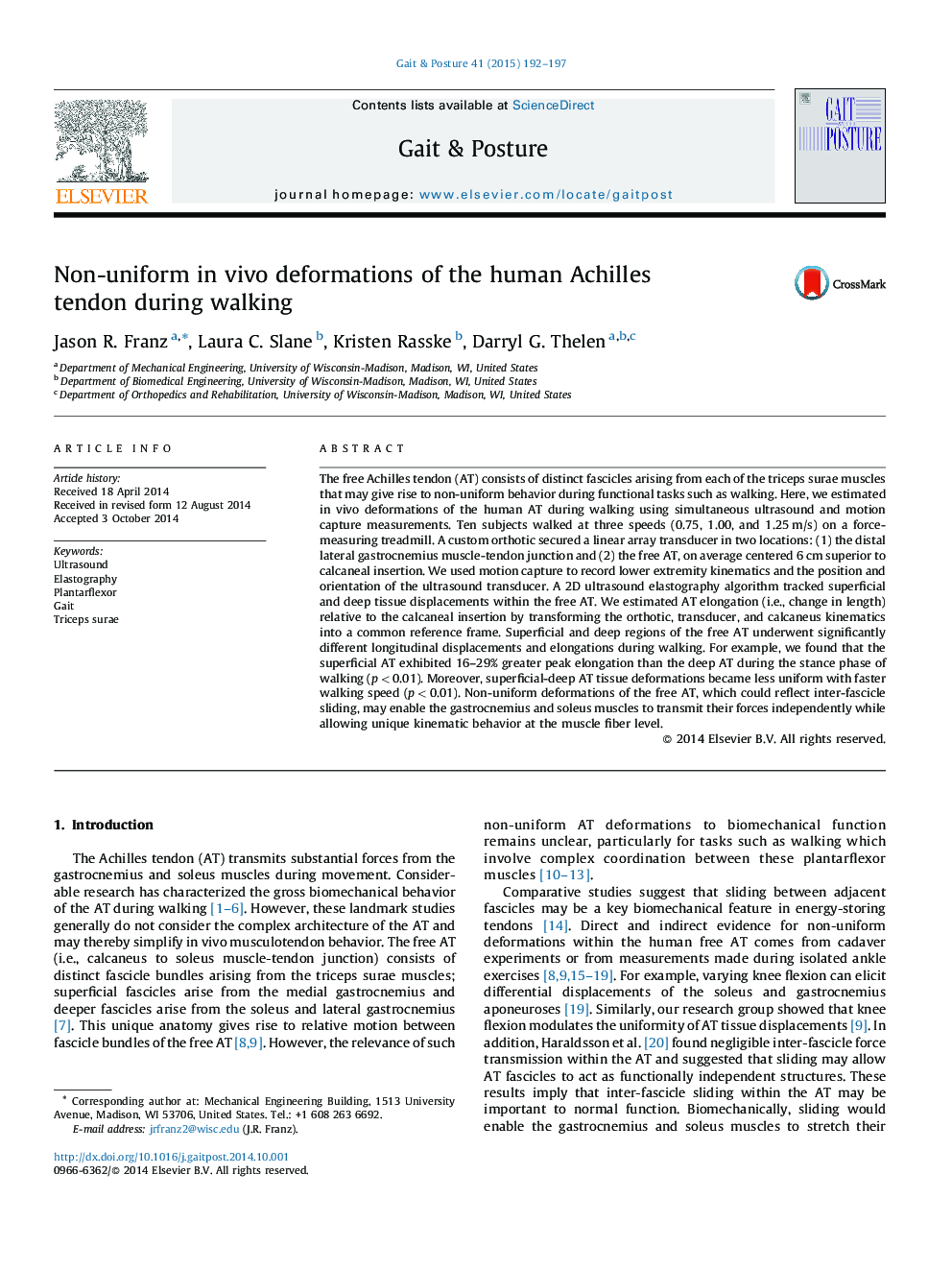| Article ID | Journal | Published Year | Pages | File Type |
|---|---|---|---|---|
| 6205702 | Gait & Posture | 2015 | 6 Pages |
â¢Quantified in vivo deformations of the human free Achilles tendon during walking.â¢Coupled custom ultrasound elastography with quantitative motion capture.â¢Superficial and deep free Achilles tendon regions undergo different deformations.â¢Non-uniform deformations may reflect sliding between tendon fascicles.â¢Relevant to the coordination of triceps surae muscle forces during walking.
The free Achilles tendon (AT) consists of distinct fascicles arising from each of the triceps surae muscles that may give rise to non-uniform behavior during functional tasks such as walking. Here, we estimated in vivo deformations of the human AT during walking using simultaneous ultrasound and motion capture measurements. Ten subjects walked at three speeds (0.75, 1.00, and 1.25 m/s) on a force-measuring treadmill. A custom orthotic secured a linear array transducer in two locations: (1) the distal lateral gastrocnemius muscle-tendon junction and (2) the free AT, on average centered 6 cm superior to calcaneal insertion. We used motion capture to record lower extremity kinematics and the position and orientation of the ultrasound transducer. A 2D ultrasound elastography algorithm tracked superficial and deep tissue displacements within the free AT. We estimated AT elongation (i.e., change in length) relative to the calcaneal insertion by transforming the orthotic, transducer, and calcaneus kinematics into a common reference frame. Superficial and deep regions of the free AT underwent significantly different longitudinal displacements and elongations during walking. For example, we found that the superficial AT exhibited 16-29% greater peak elongation than the deep AT during the stance phase of walking (p < 0.01). Moreover, superficial-deep AT tissue deformations became less uniform with faster walking speed (p < 0.01). Non-uniform deformations of the free AT, which could reflect inter-fascicle sliding, may enable the gastrocnemius and soleus muscles to transmit their forces independently while allowing unique kinematic behavior at the muscle fiber level.
